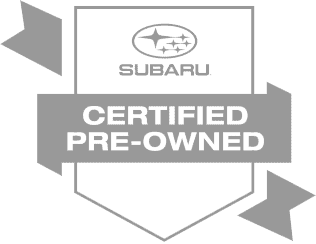(continuously variable transmission). Capability is enhanced with a segment-first swing-out roof crossbar design and an improved 8.7 inches of ground clearance.
The all-new 2010 Subaru Outback is smart-sized compared to other 2-row crossover vehicles, featuring a mid-size interior in an easy-to-maneuver and off-road capable wagon body. Subaru engineers have increased interior volume by almost 7 percent in a package that is slightly shorter than the previous model. The wheelbase is 2.8 inches longer and rear seat legroom is improved by almost 4 inches, but front and rear overhangs are reduced by around 2 inches to maintain vehicle capability. A new rear double wishbone suspension enhances chassis dynamics and rear cargo space. The 2010 Outback is also 2.0 inches wider to improve passenger comfort and has more headroom than the previous model.
Must-Know Facts
- Roomiest Outback ever with new levels of comfort and refinement.
- Bold new design with renowned Subaru packaging efficiency.
- New 6-speed manual and CVT transmissions for Outback 2.5i models.
- New Outback 3.6R models featuring more powerful regular-fuel 6-cylinder engine.
- Improved fuel economy for all models.
Building on the tremendous success of previous Outback models, the 2010 Outback caters to a wide variety of customer tastes and needs. The Outback line for 2010 includes the 2.5i, powered by a revised 170-hp 2.5-liter 4-cylinder Boxer engine, and the new Outback 3.6R powered by a 256-hp 3.6-liter 6-cylinder Boxer engine teamed with a 5-speed electronic automatic transmission.
The efficient Outback 2.5i offers a new standard 6-speed manual transmission, or the available Lineartronic CVT. Both transmissions help to improve acceleration, response and fuel economy. When equipped with the Lineartronic CVT, the 2010 Outback 2.5i achieves EPA fuel economy estimates of 22 mpg city / 29 mpg highway, making the roomiest Outback ever also the most fuel-efficient Outback ever. Part of the efficiency story is that the 2010 Outback features greater use of high-tensile strength steel to keep any weight increase below 95 pounds on any one model, despite the roomier interior package. All Outback models for 2010 feature a larger fuel tank, now 18.5 gallons vs. 16.9, for increased driving range.
Compared to the 3.0-liter 6-cylinder engine it replaces, the more powerful 3.6-liter Boxer has a similar external size and uses recommended regular-grade fuel, rather than premium as Subaru recommended to achieve rated output figures in the previous 3.0R models.
Subaru is the only company that features Symmetrical All-Wheel Drive as standard equipment on every vehicle in its product line. This invaluable performance and safety-enhancing system distinguishes the Outback from crossover competitors, which generally offer all wheel drive only as an extra-cost option. The 2010 Outback model line employs three different versions of Symmetrical All-Wheel Drive, each tailored to the specific transmission.
Bold New Design and New Level of Interior Comfort
The 2010 Outback, while clearly related to its predecessors, marks a departure in design toward a new, bolder look. The new Outback blends a sophisticated crossover design with SUV details. The upright grille features the Subaru circular badge and wing design as the focal point and is offset by dramatic hawk-eye headlamps. The new functional molded lower rocker and side cladding convey the Outback's improved capability and are more durable for off-pavement driving.
The 2010 Outback also has a greater road presence with a wider track and expressive wheel arches. Ground clearance on the new model has been increased to 8.7 inches, among the best of all crossover vehicles available, yet still with a more comfortable step-in height than traditional SUVs. As a new characteristic of the Outback, the D-pillars project a powerful SUV-like presence. The taillamps blend into the rear liftgate, which highlights the more clearly defined beltline.
Right-Sized for the Times
The original Outback established a template for many competitive crossover models that followed, and the new-generation 2010 Outback further strengthens the melding of passenger car and SUV attributes that today's crossover shoppers seek.
Built on an all-new platform, the 2010 Outback showcases Subaru's mastery of vehicle packaging efficiency. A 2.8-inch longer wheelbase, now 107.9 inches, contributes to a smoother ride and increased interior space. Total passenger volume is increased by nearly 8 cubic feet, now 105.4 cu. ft., and maximum cargo capacity (with the standard 60/40 split rear seatbacks folded) is increased by 6 cubic feet to 71.3 cu. ft. The Outback also features a rear cargo area that is deeper and wider than in many small SUVs and easier to access through its wide aperture rear hatch.
Rear seat legroom is increased by nearly 4 inches to 37.8 inches. With a 2.0-in. increase in vehicle width, the 2010 Outback offers greater hip room (+3.5 inches in front, +1.3 in. in back) and shoulder room (+1.9-in. front, +2.4-in. in back).
Remarkably, the roomier 2010 Outback is almost one inch shorter than the previous model, due to reduced front and rear overhang dimensions. The new Outback is also 2.3 inches taller than the previous model, increasing headroom and cargo area height. The new packaging thus preserves the maneuverability, agility and parking ease that Outback customers highly value.
In the mid-1990s, America's desire for SUVs was growing at a rapid pace. To the brain trust at Subaru, it was fairly obvious that consumers liked the elevated seating and macho styling of these vehicles, but had little use for their bouncy rides and poor fuel economy. The company's solution? The Subaru Outback, the "world's first sport-utility wagon."
Designed with the North American market in mind, the Subaru Outback provided many popular SUVs traits without the associated drawbacks. Subaru based it on its midsize Legacy platform and made sure the vehicle came standard with all-wheel drive, a raised suspension for better ground clearance, and special interior and exterior styling details.
At its debut, the Subaru Outback was pretty much the only vehicle of its type and was an instant hit with consumers. It did lose a bit of an edge as other automakers came up with similar crossover wagons and SUVs at the start of the new millennium, but Subaru has recently countered with its fourth-generation Outback, which is more like a crossover SUV than ever. New or used, the Outback is a strong contender for shoppers interested in a car that provides plenty of everyday versatility with the type of all-season capability needed for frosty climes.
Current Subaru Outback
Redesigned for 2010, the five-passenger Subaru Outback is a tall wagon available in a number of trim levels -- 2.5i, 2.5i Premium, 2.5i Limited, 3.6R, 3.6R Premium and 3.6R Limited -- distinguished by powertrain. The base engine is a 2.5-liter horizontally opposed boxer four-cylinder that makes 170 horsepower and comes with either a six-speed manual transmission or a continuously variable transmission (CVT). Also available is 3.6-liter six-cylinder boxer engine good for 256 hp, with a five-speed conventional automatic as the only available transmission.
Even the base Outback comes with roof rails, full power accessories, cruise control, a tilt-telescoping steering column, a height-adjustable driver seat and a CD stereo with an auxiliary audio jack. Higher trims add niceties like alloy wheels, foglights, powered and heated front seats, dual-zone automatic climate control and a Harman Kardon sound system. There's also an optional voice-activated navigation system that's bundled with an iPod/USB input, Bluetooth and streaming Bluetooth audio, and a back-up camera.
More so than previous Outbacks, the new model is meant to appeal to more mainstream buyers by being larger on the inside. To this end, while bumper-to-bumper length has shrunk by almost 1 inch, the wheelbase has grown by nearly 3 inches, width by 2 inches and height by 4 inches, enlarging interior space considerably and putting the Outback on par with other midsize crossovers. With the rear seats folded, there are an impressive 71 cubic feet of cargo space available.
In reviews, we've commented favorably about the current Outback's roomier interior. Performance with the base four-cylinder is unremarkable, however; if you want some zip, you'll need to ante up for the 3.6-liter engine. We miss the previous Outback's turbocharged boxer-4, a boon for owners living in mountainous areas. Handling is also unimpressive, as the Outback's elevated ride height and soft suspension tuning do their best to obscure the vehicle's sedan roots. Overall, the latest Outback is a solid choice for utility-minded families, but it's not as enjoyable to drive as previous models.
Used Subaru Outback Models
The third-generation Outback was produced from 2005-'09. There were several trim levels: base 2.5i, 2.5i Special Edition, 2.5i Limited, 2.5 XT Limited, 3.0 R, 3.0R Limited and 3.0R L.L. Bean Edition.
For power, 2.5i trim levels had a 2.5-liter horizontally opposed four-cylinder engine that made 170 hp. The XT level upgraded to a 2.5-liter turbocharged engine with 243 hp. The 3.0 R model came with a 3.0-liter horizontally opposed six-cylinder (H6) good for 245 hp. All-wheel drive was standard across the board.
Models with either of the 2.5-liter engines could be equipped with a five-speed manual transmission. A four-speed automatic was available on 2.5i models, while 2.5 XT models got an optional five-speed auto. The 2.5i Limited models were four-speed automatics only, and the H6 came only with the five-speed automatic.
If you're shopping for a used model of this generation, there are a few items to note. An Outback sedan was offered from 2005-'07. Additionally, all Outbacks prior to the 2008 model year lacked a telescoping steering wheel and auxiliary audio jack. Horsepower figures were lowered for 2007 due to revised SAE standards, but actual performance was not affected. The luxurious L.L. Bean trim levels were discontinued after 2008, replaced by a single 3.0 R Limited model, and stability control also became standard.
In reviews, this third-generation Subaru Outback received praise for its standard all-wheel drive, long list of features, strong turbocharged engine, above-average build quality and balanced ride and handling dynamics. While it didn't quite have the off-road capabilities of a true SUV, it could take on light-duty terrain without complaint. Negatives brought up in reviews typically centered on the vehicle's smallish backseat and the sluggish response from the automatic transmissions.
The second-generation Subaru Outback (2000-'04) was also available as either a sedan or a wagon. In its first year, this model was available in base and Limited trims, and had a 165-hp, 2.5-liter engine. The following year, Subaru introduced the L.L. Bean Edition and the VDC trim levels. These featured the more powerful 212-hp six-cylinder engine.
Compared to the current car, the second-generation Outback is a bit smaller and not quite as refined or capable. Subaru made minor improvements to this generation during the years, but none are significant enough to make any particular model year stand out. In Edmunds.com road tests, reviewers liked its standard all-wheel drive and car-based comfort. Some felt that the four-cylinder models were underpowered, however, and that it was eclipsed by newer competition in its later years.
When the original Subaru Outback model debuted in 1995, it was little more than a trim package on the Legacy wagon. In 1996, the Outback (officially known as the Legacy Outback for this generation) gained its raised suspension, large foglights, SUV design cues and optional 155-hp 2.5-liter engine. Further improvements during successive years included the addition of a leather-lined Limited model, dual sunroofs and powertrain refinements. As the Outback was one of the first crossover wagons to be designed, consumers interested in this type of vehicle from the late 1990s will likely find it to be quite suitable, especially compared to SUVs from the same period.


16-inch silver-painted alloy wheels
Fog lights
All-Weather Package










